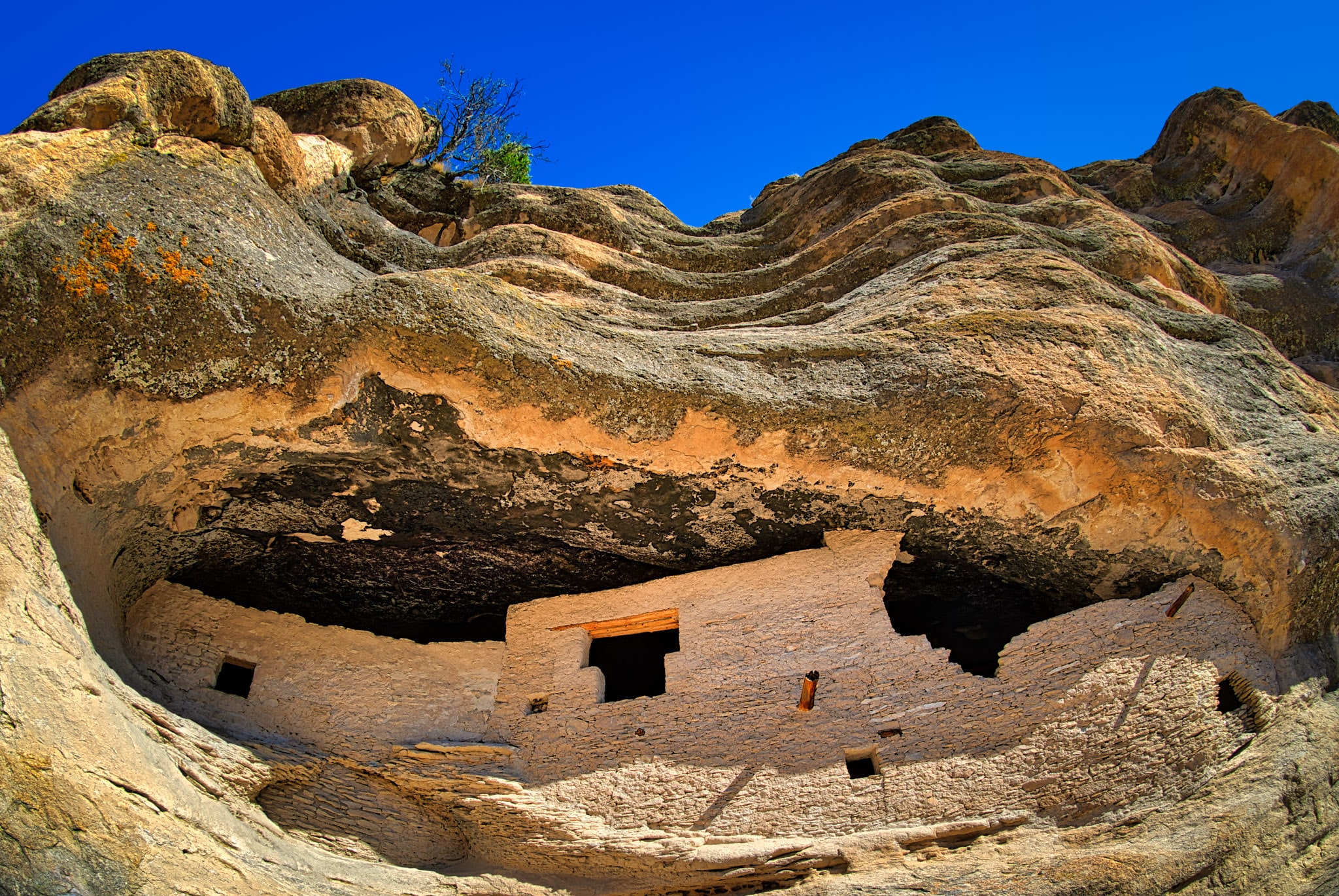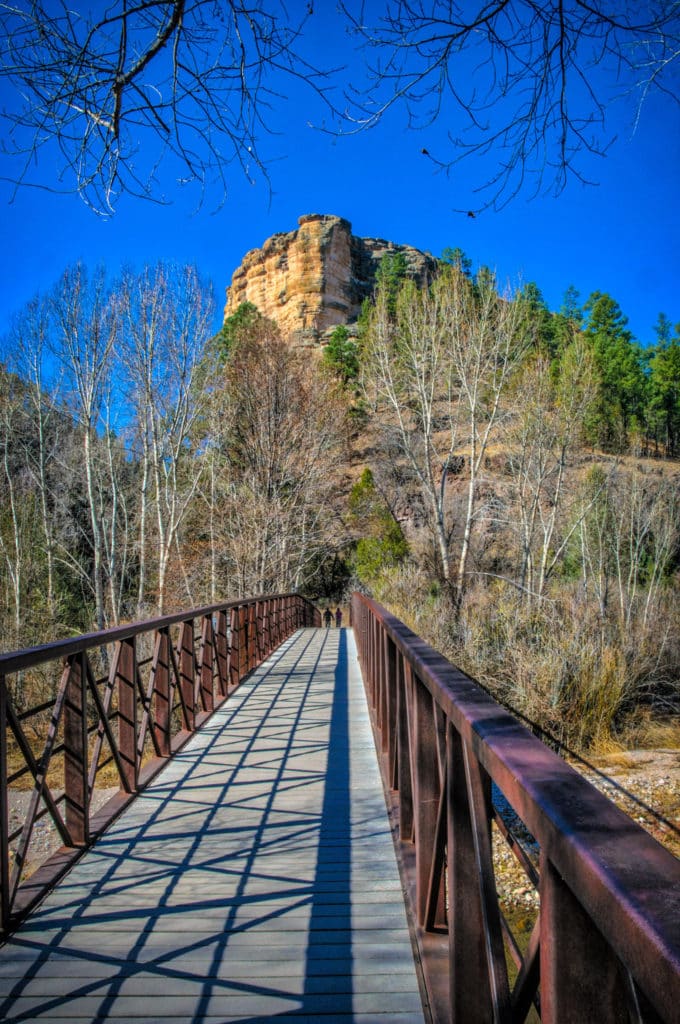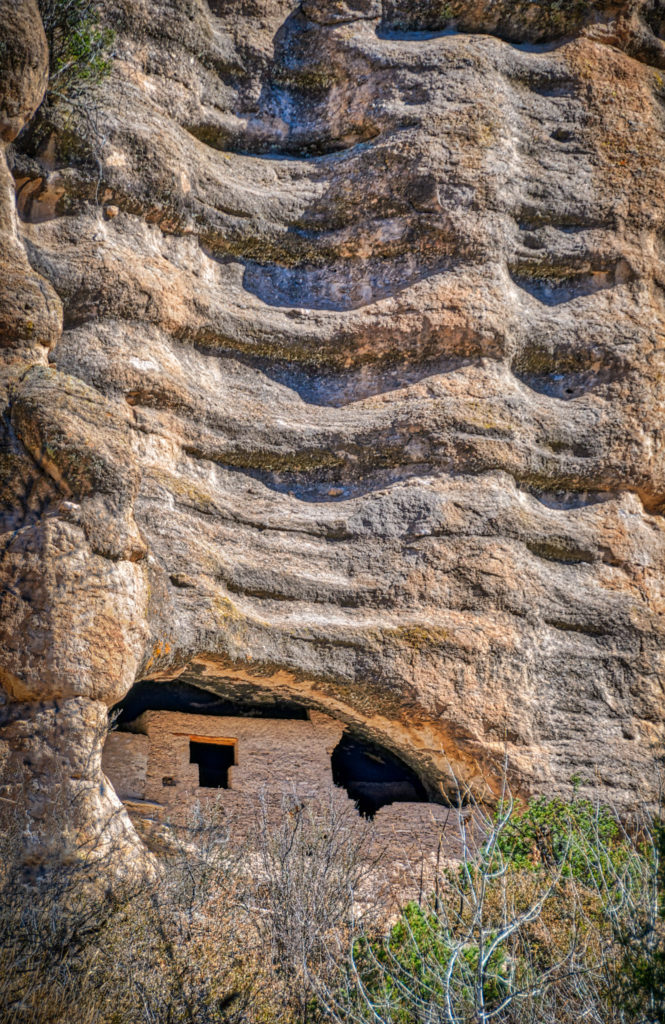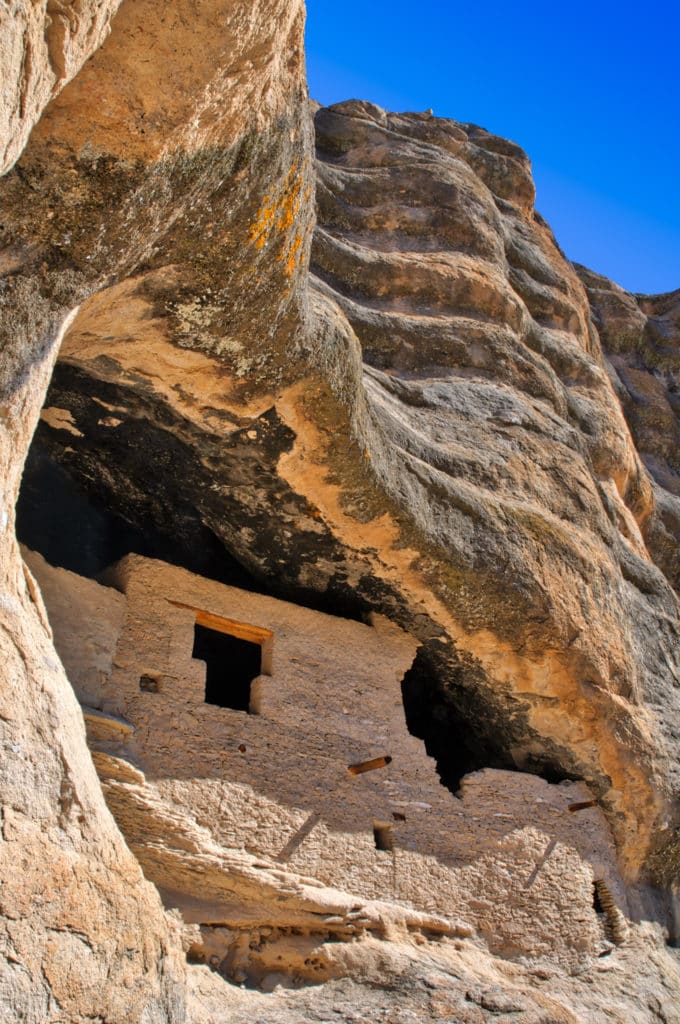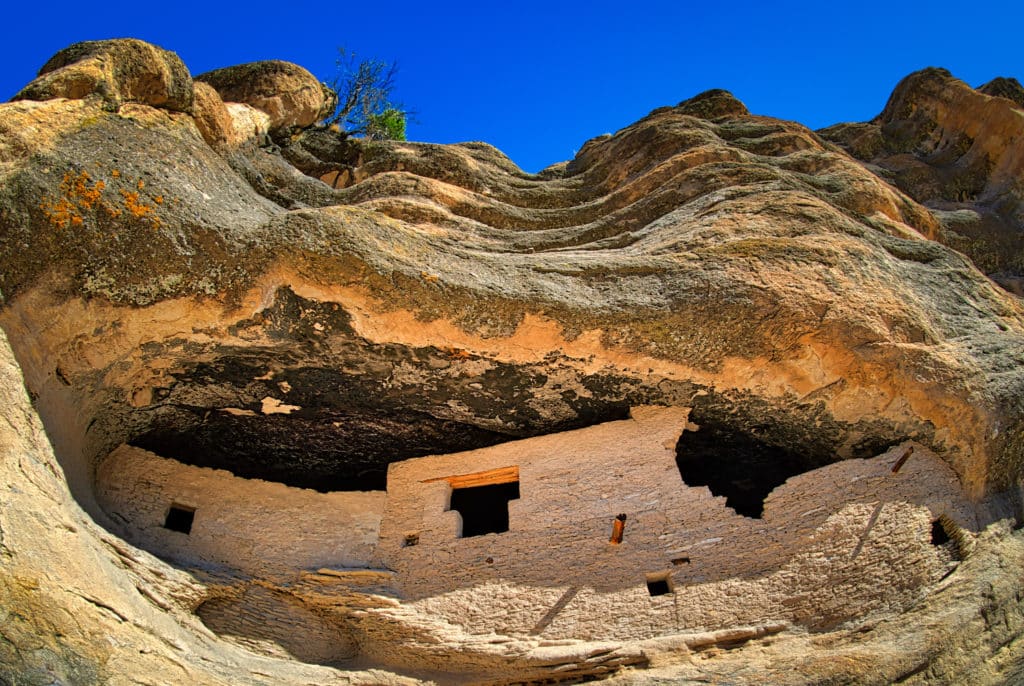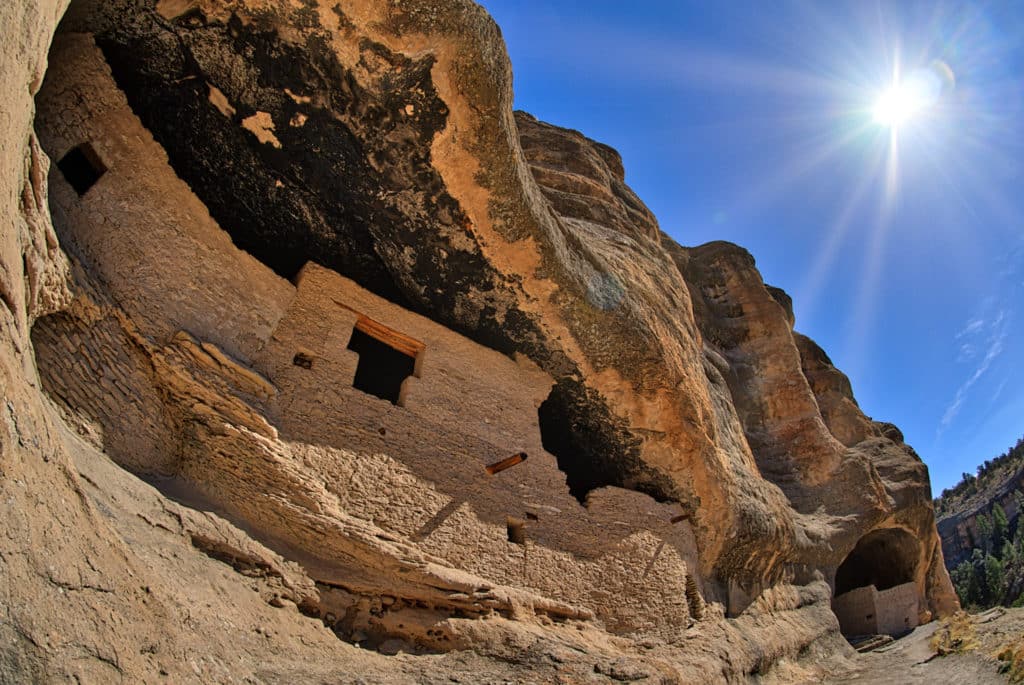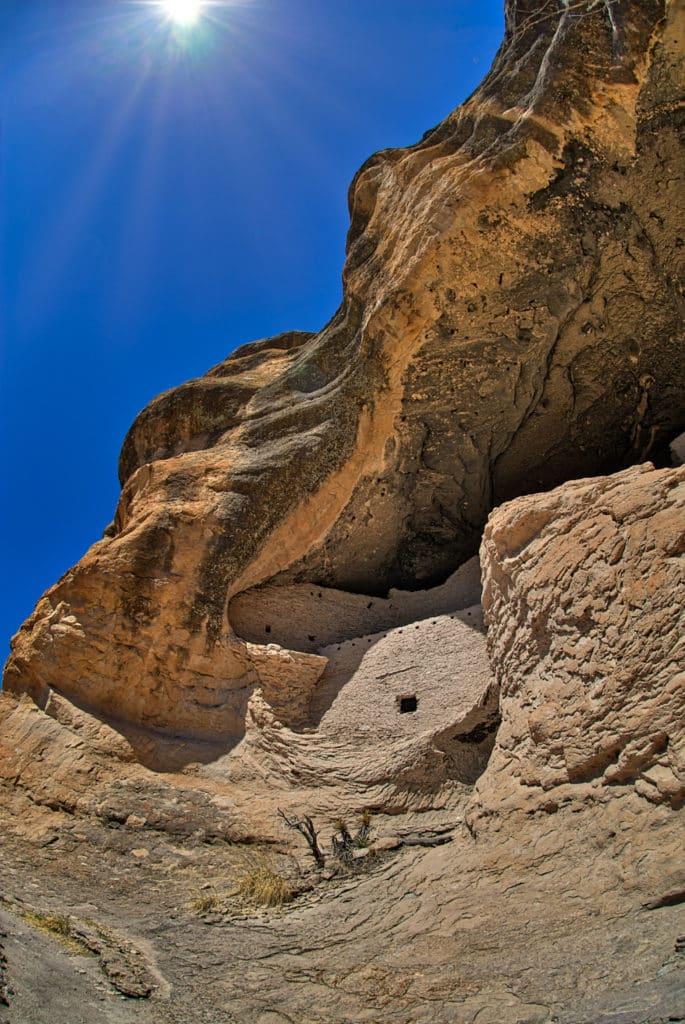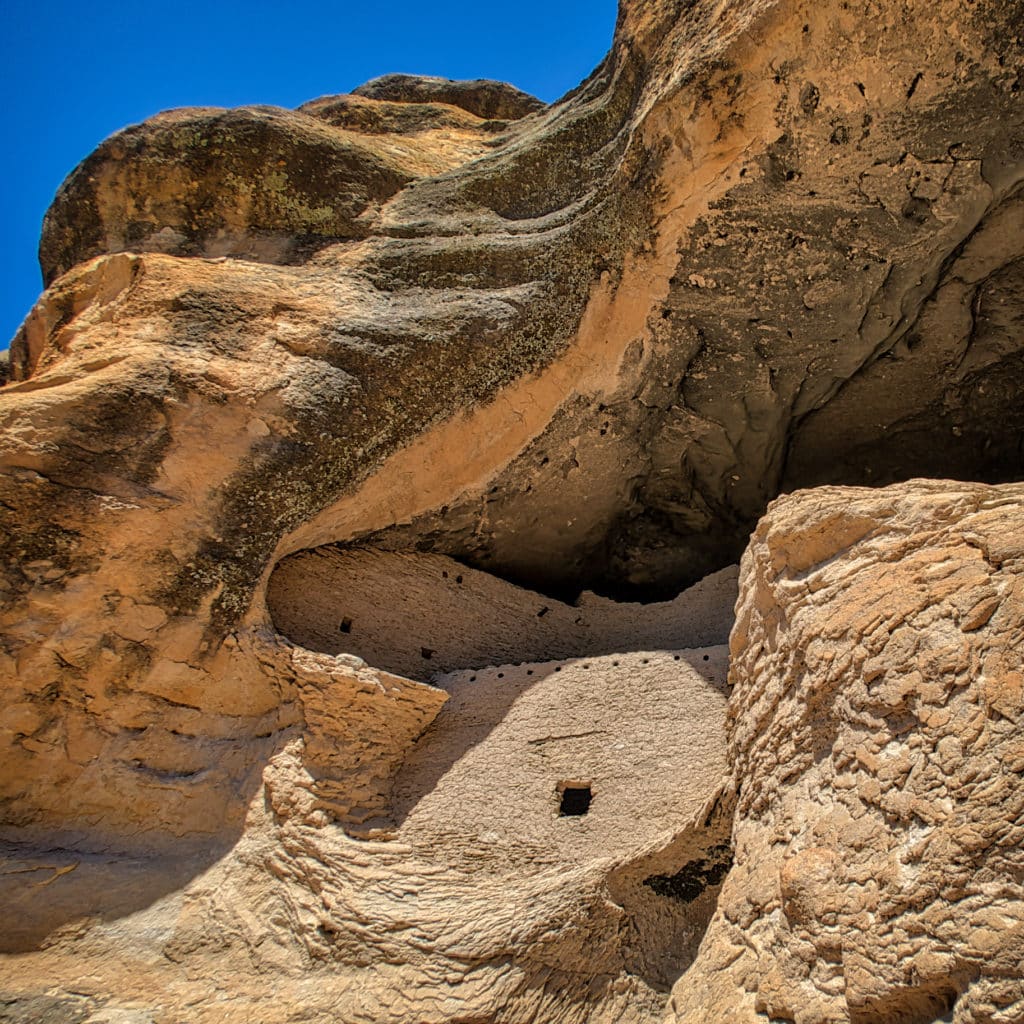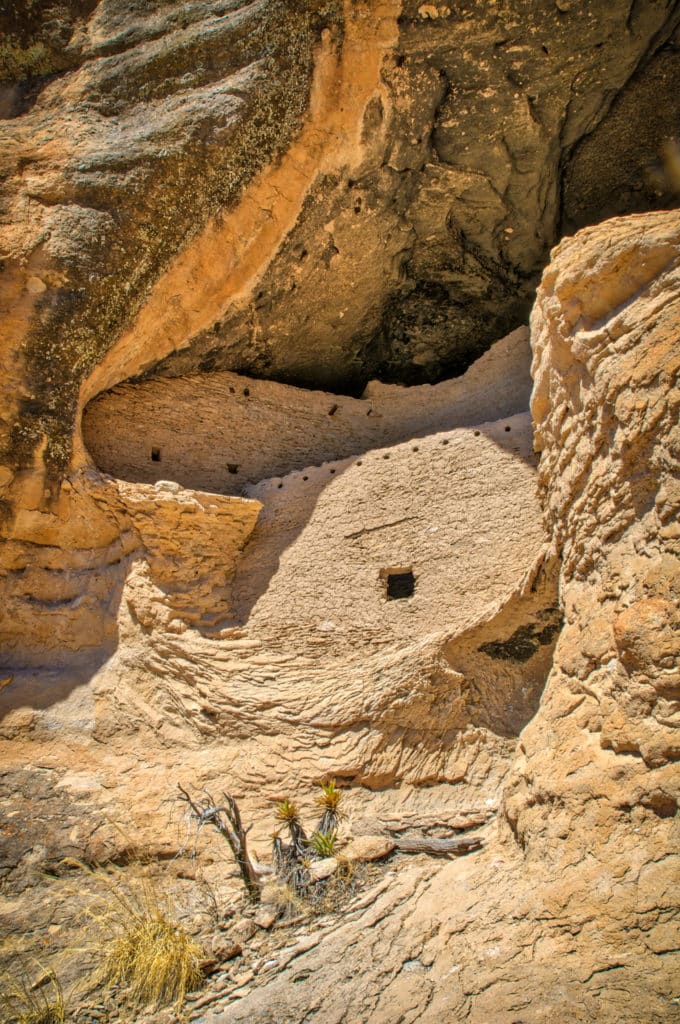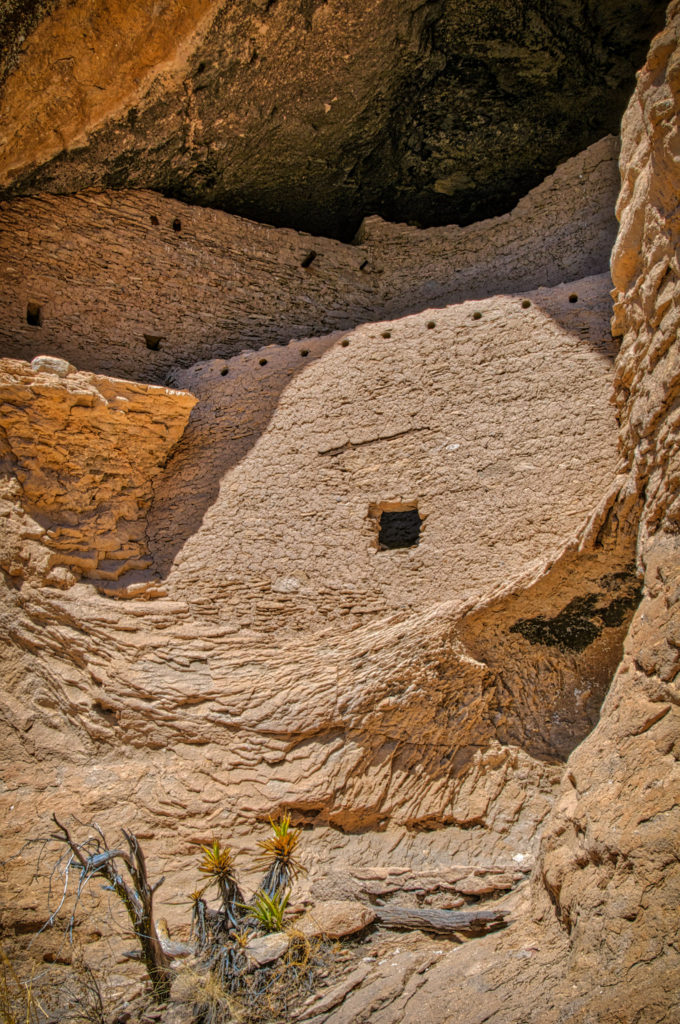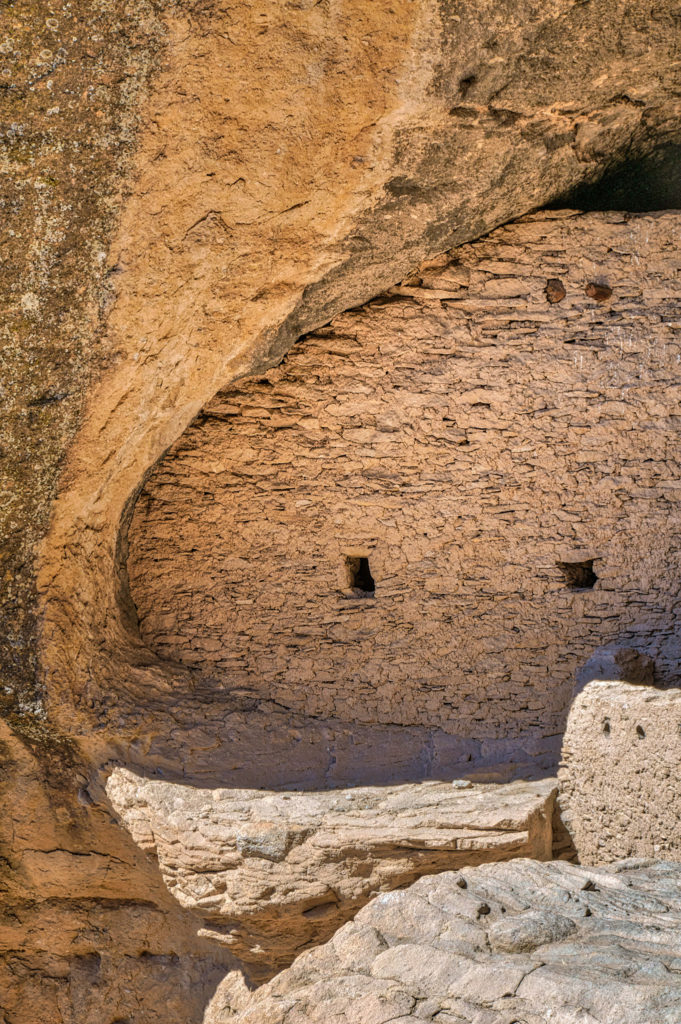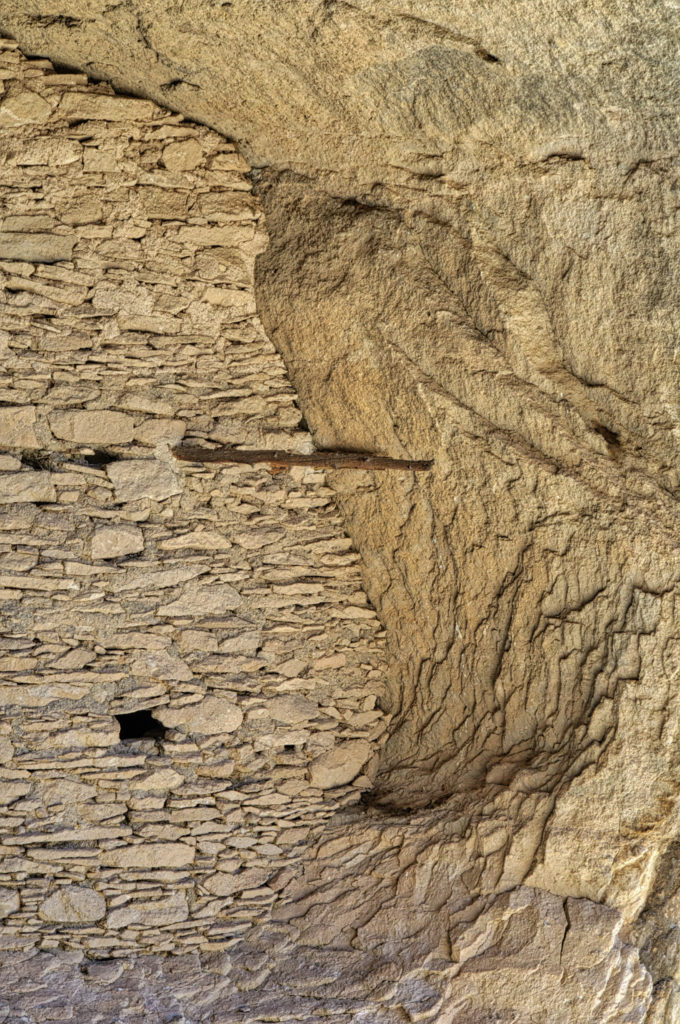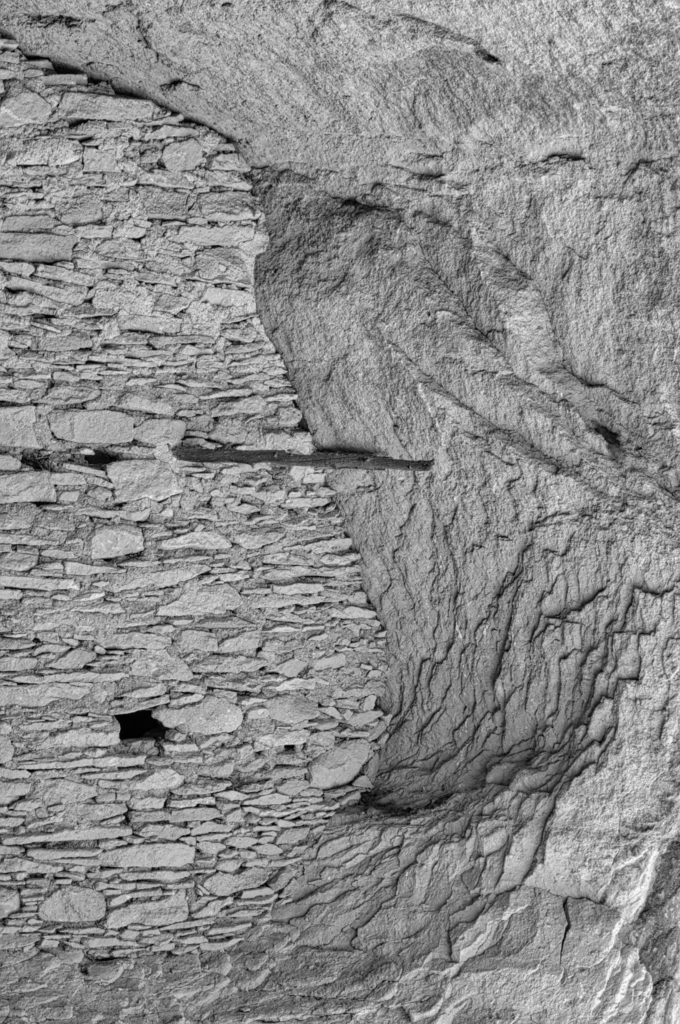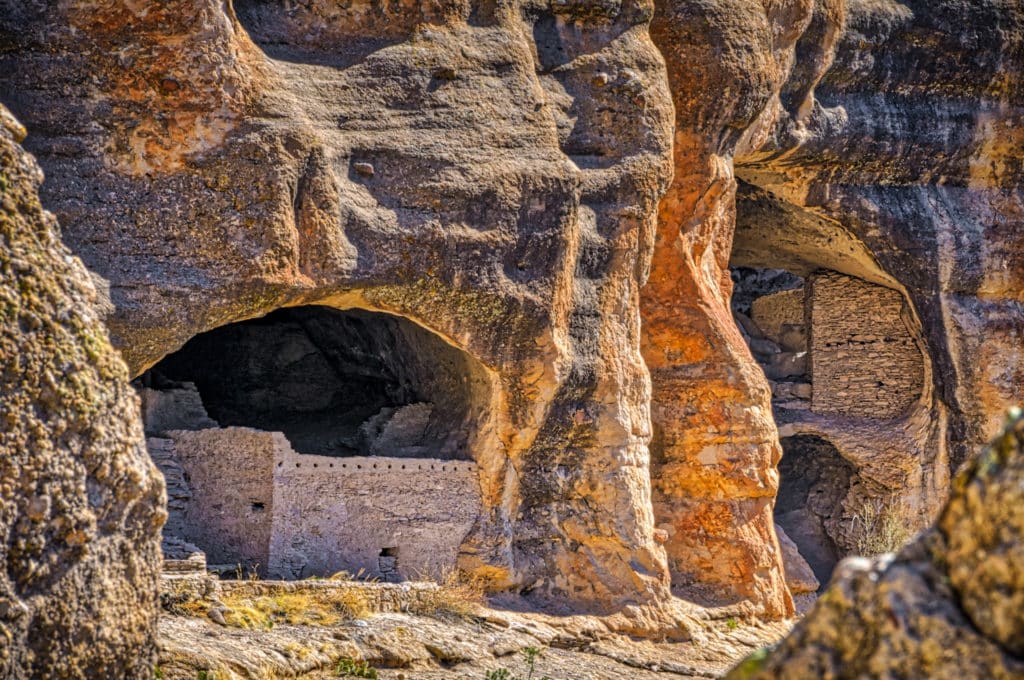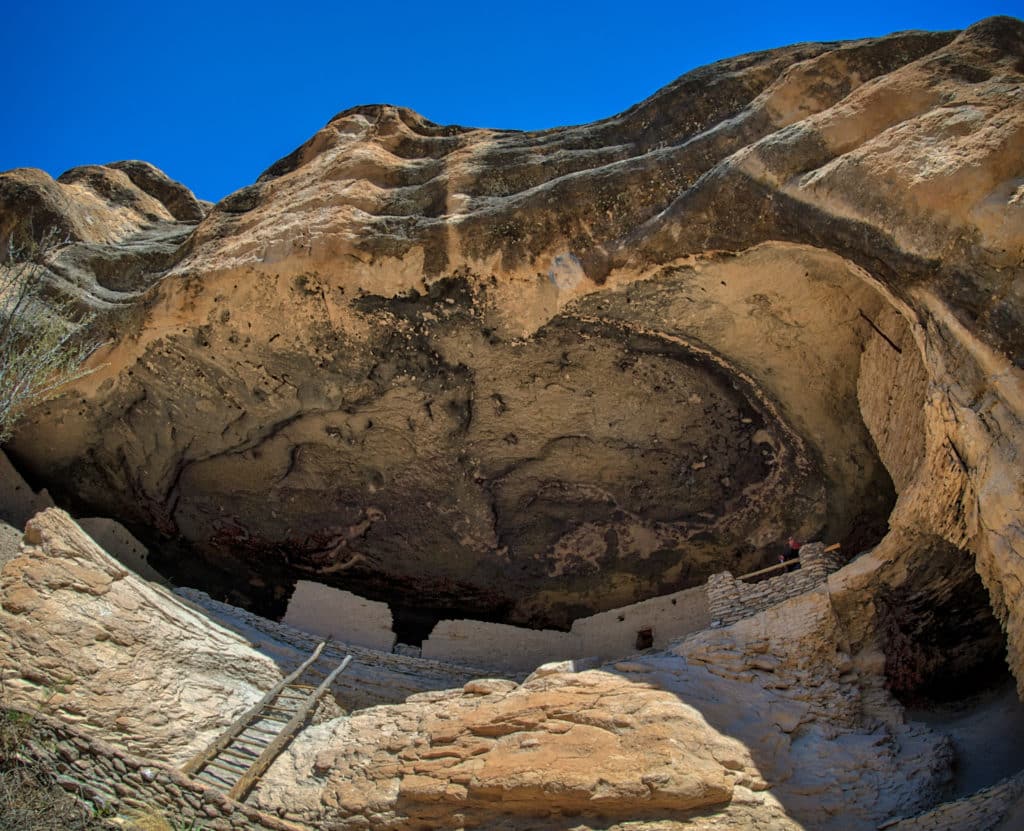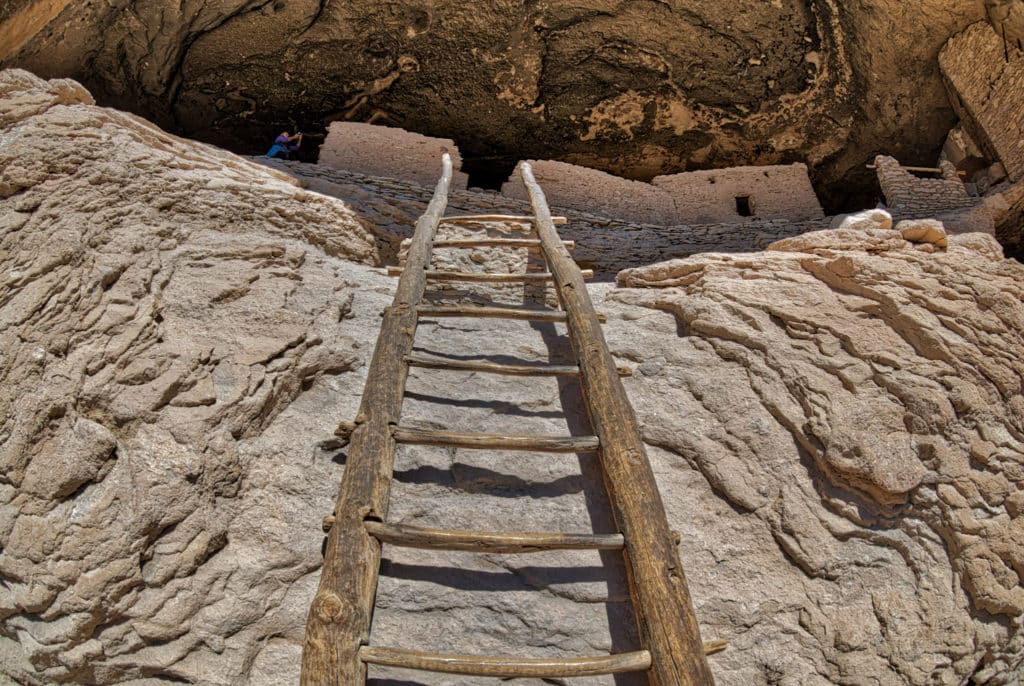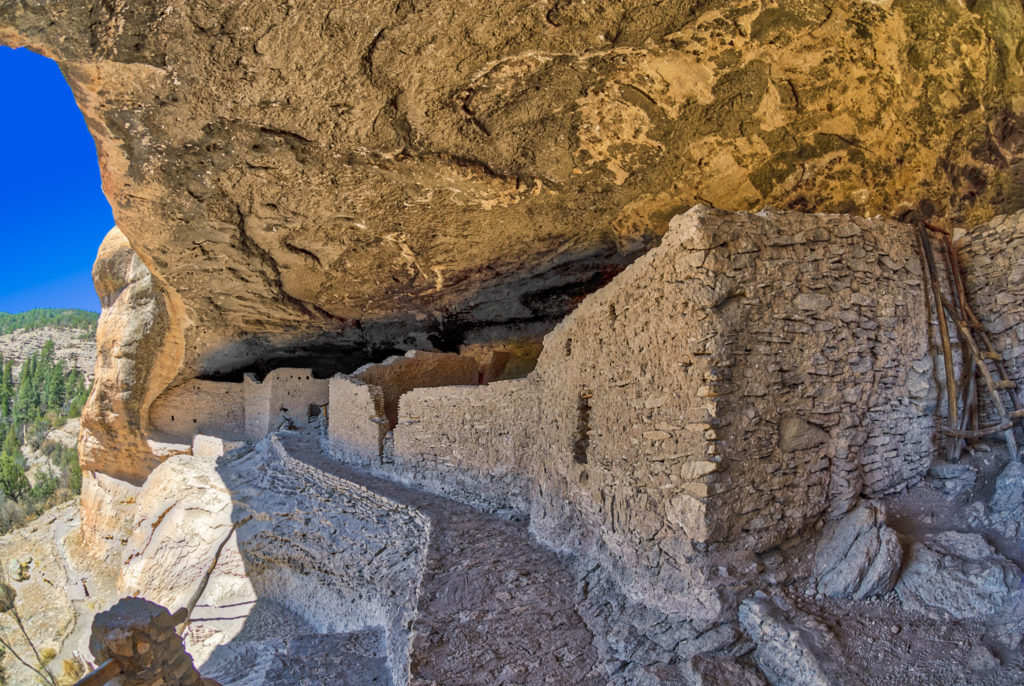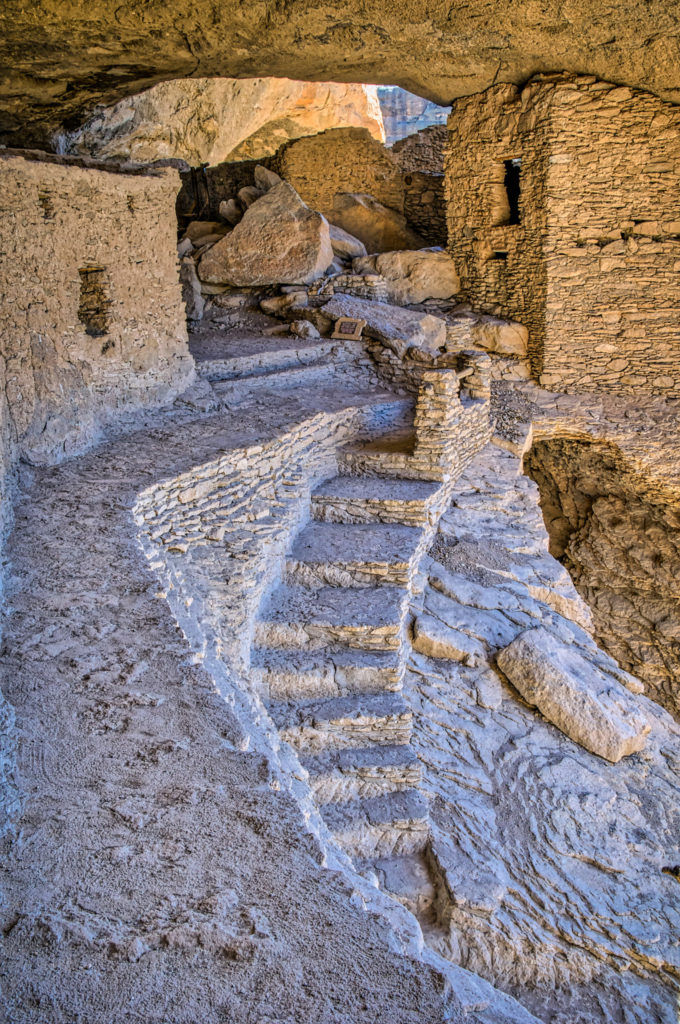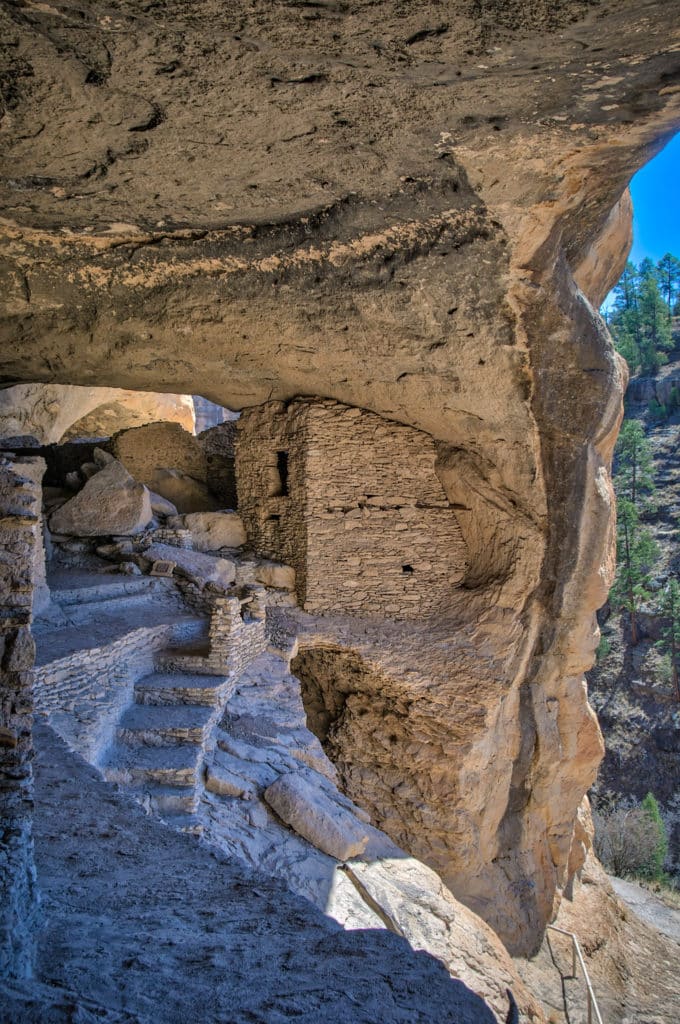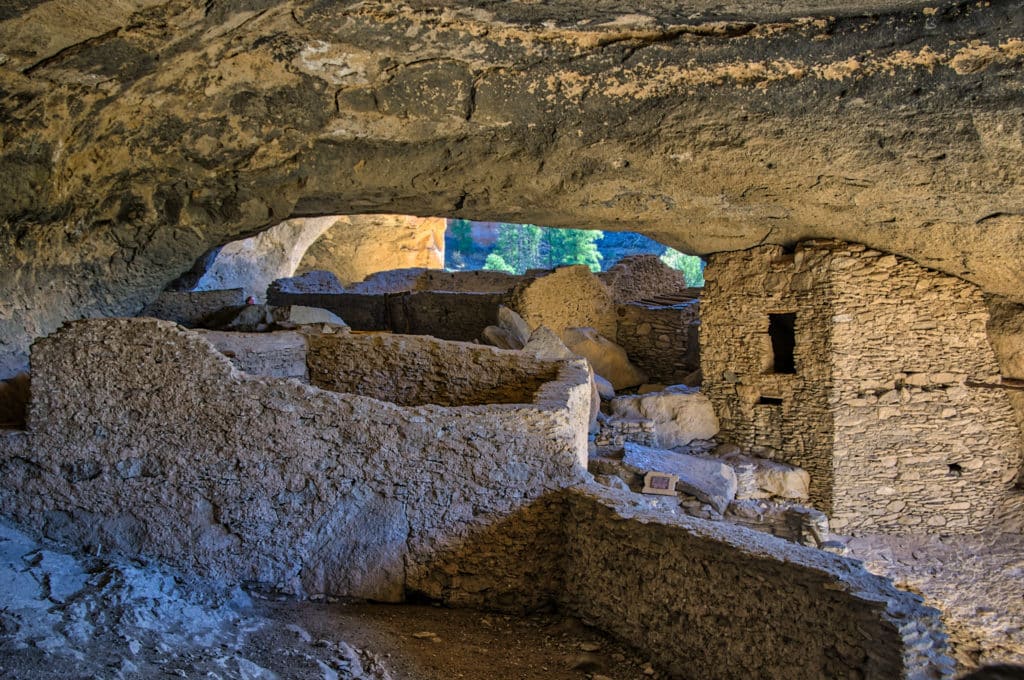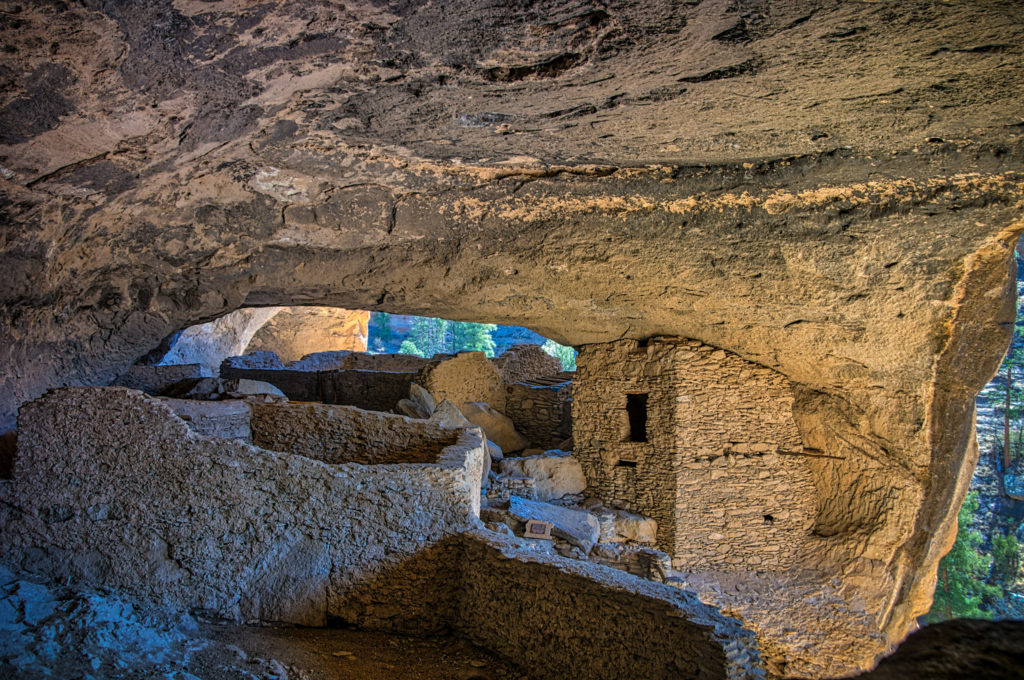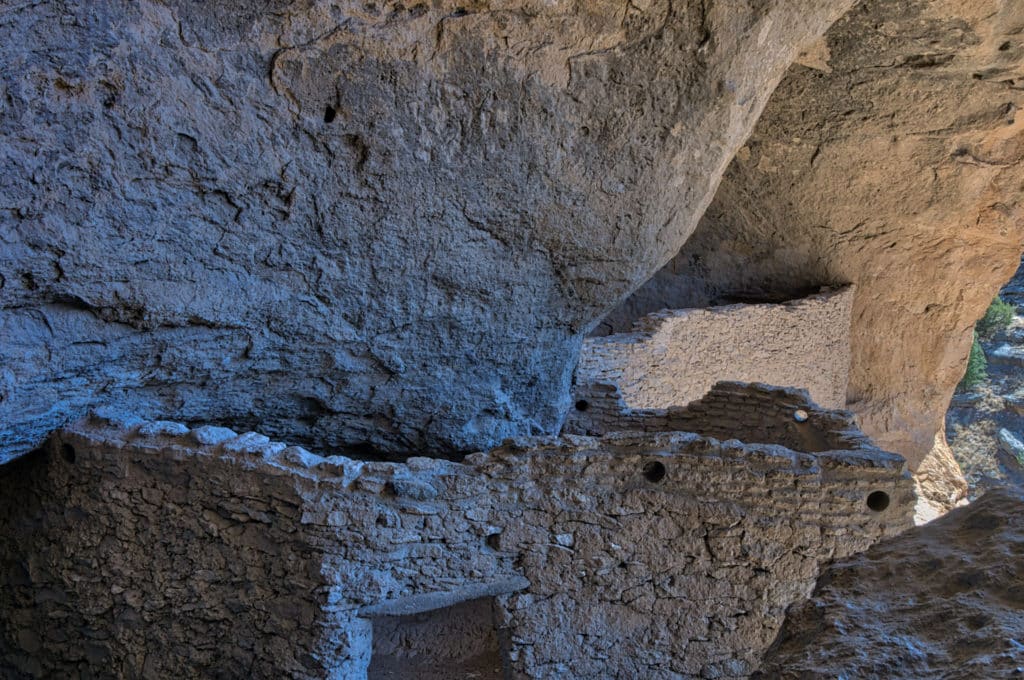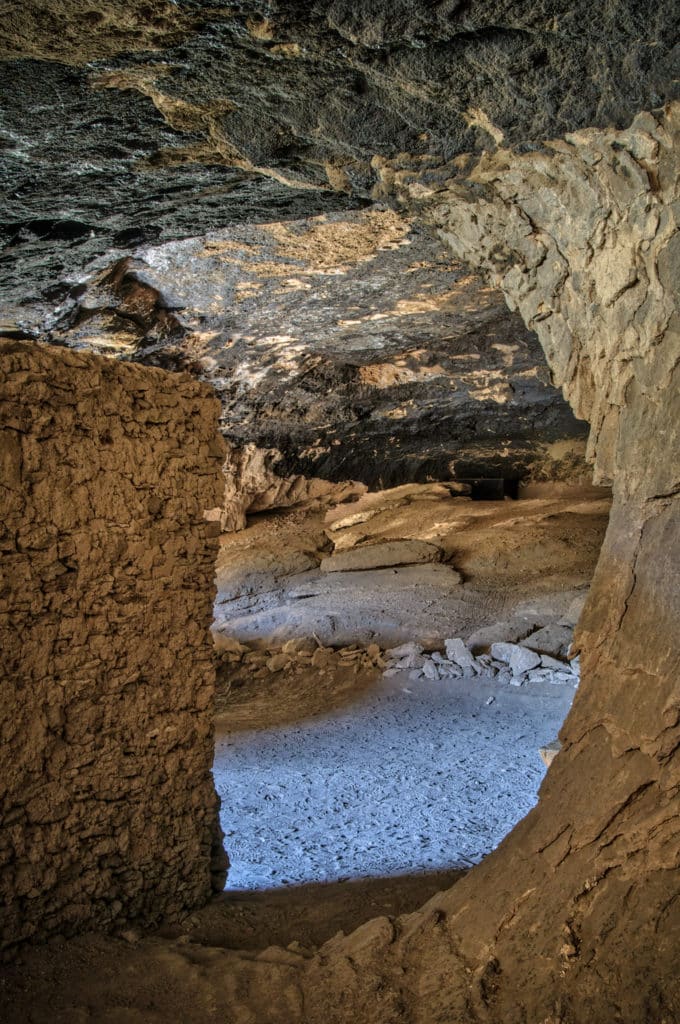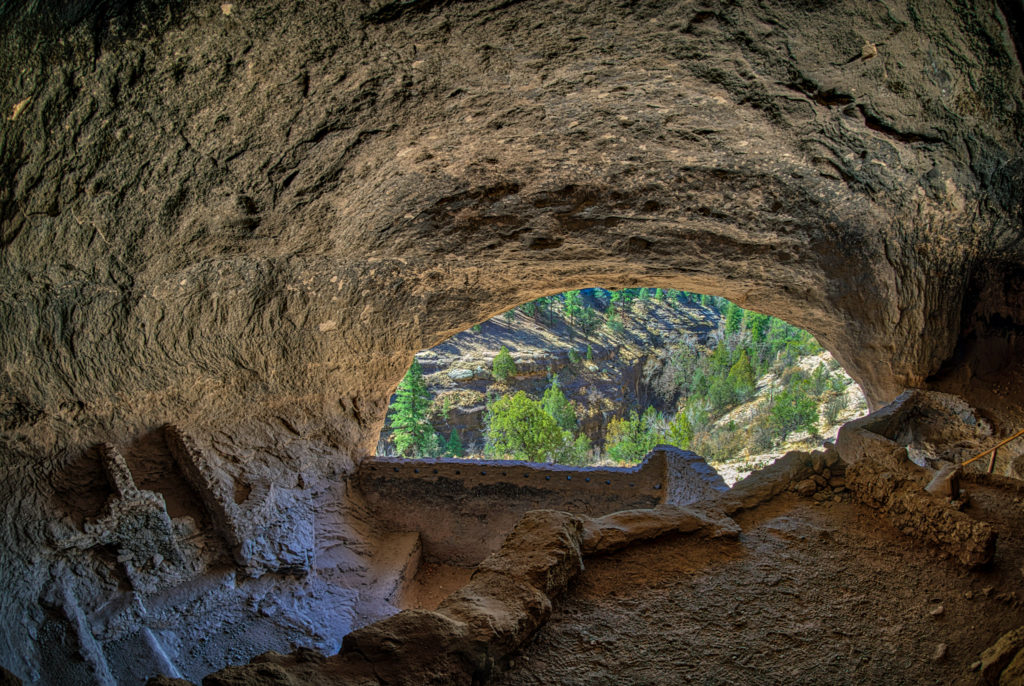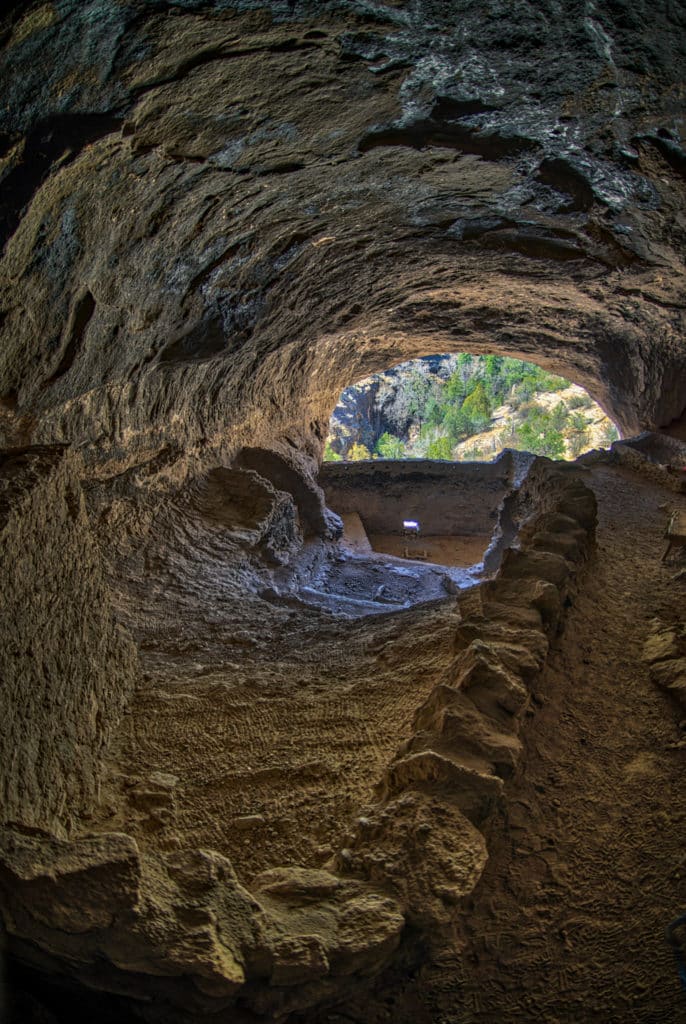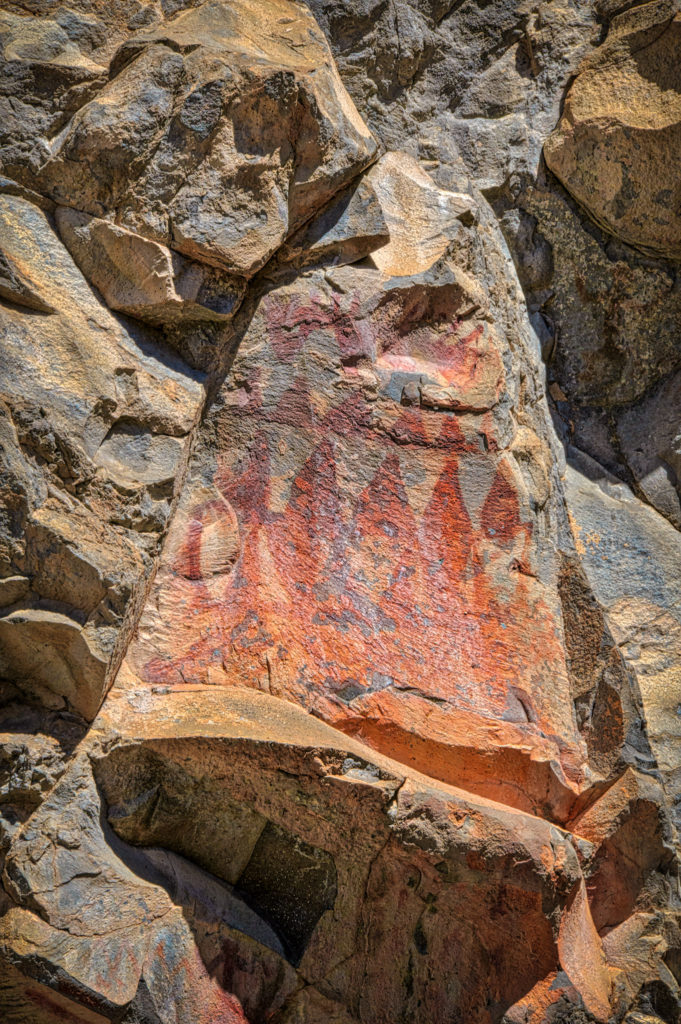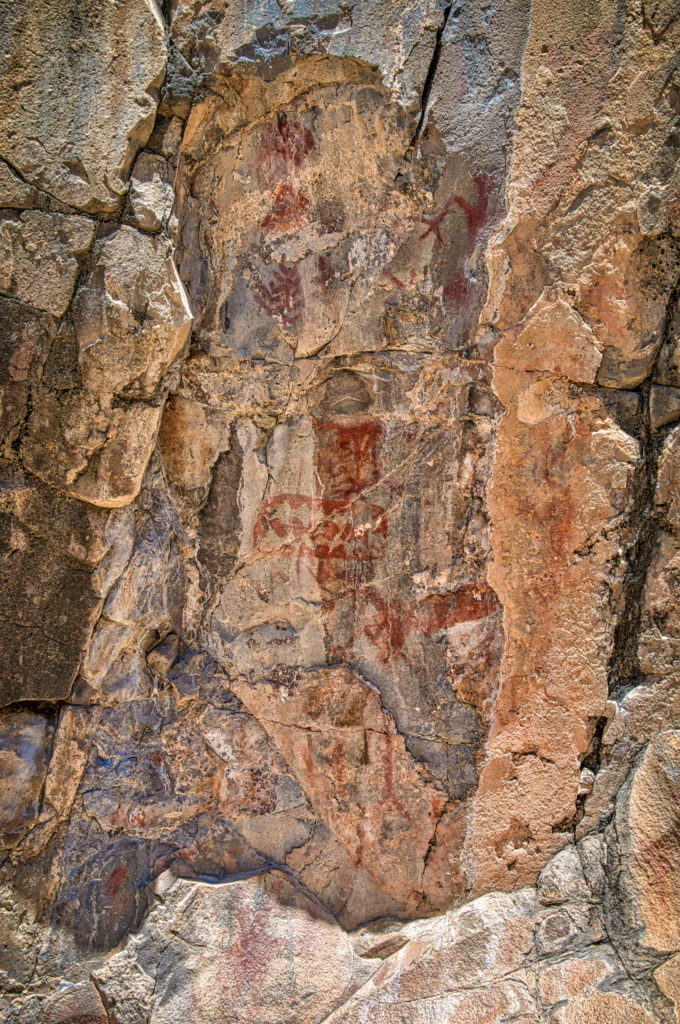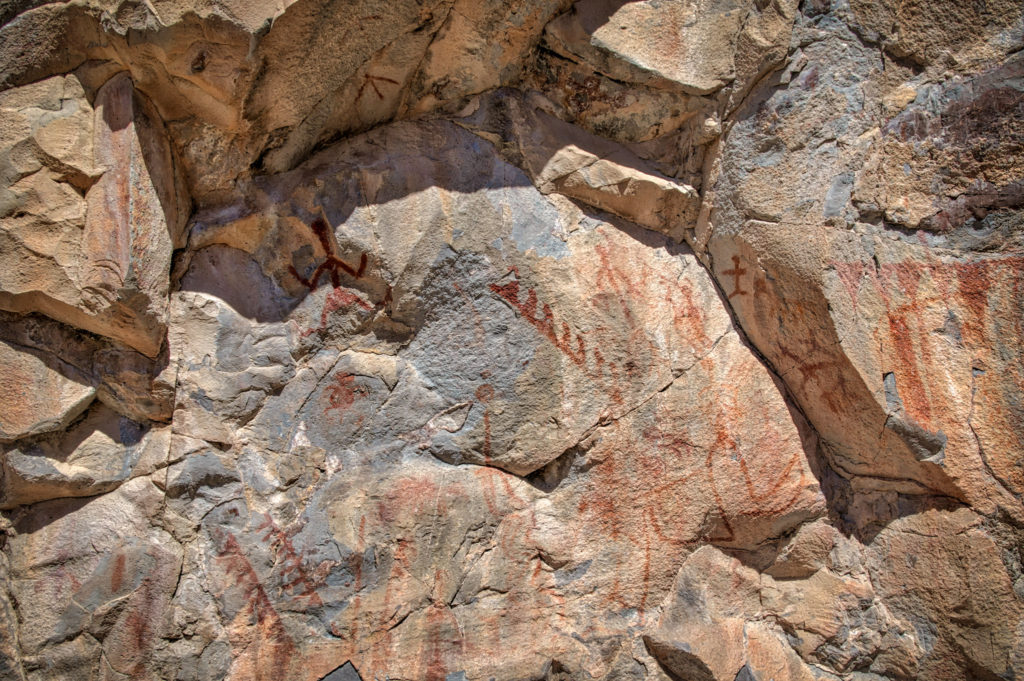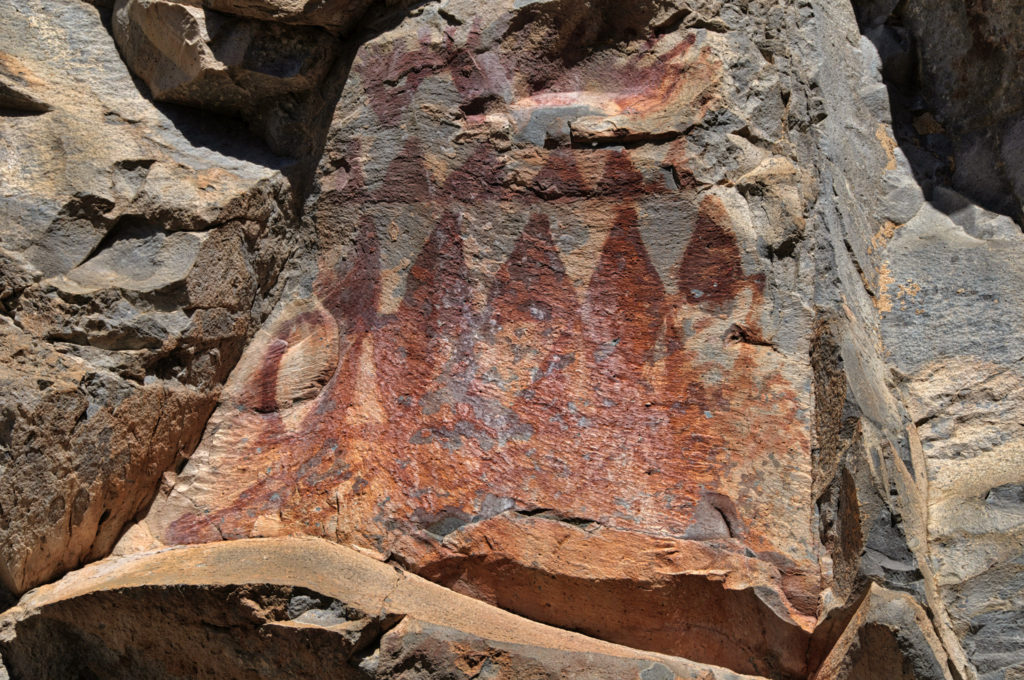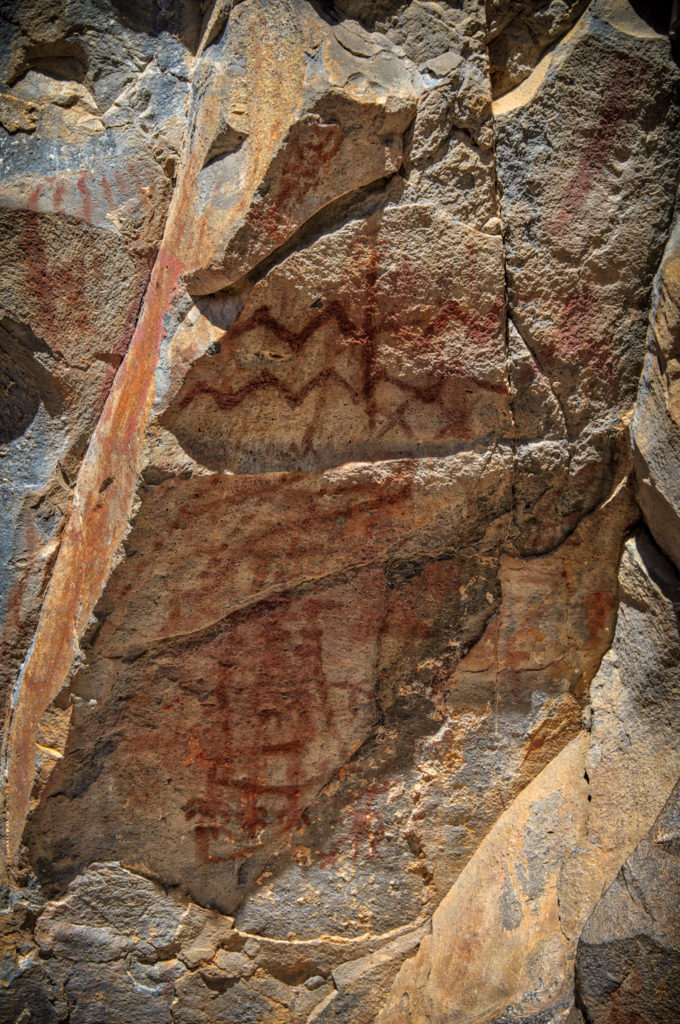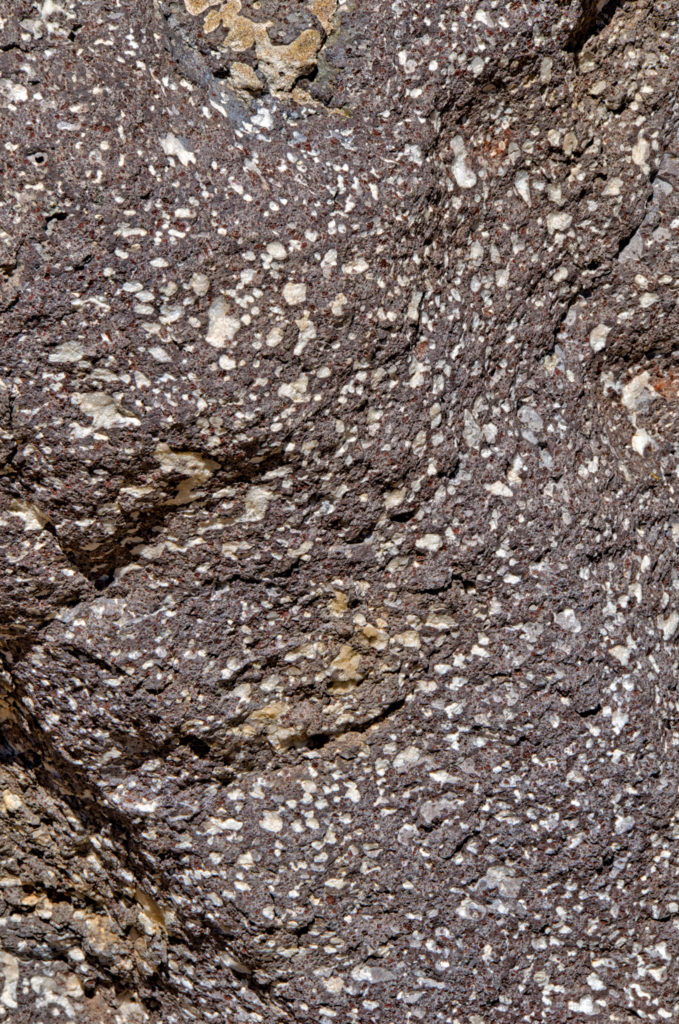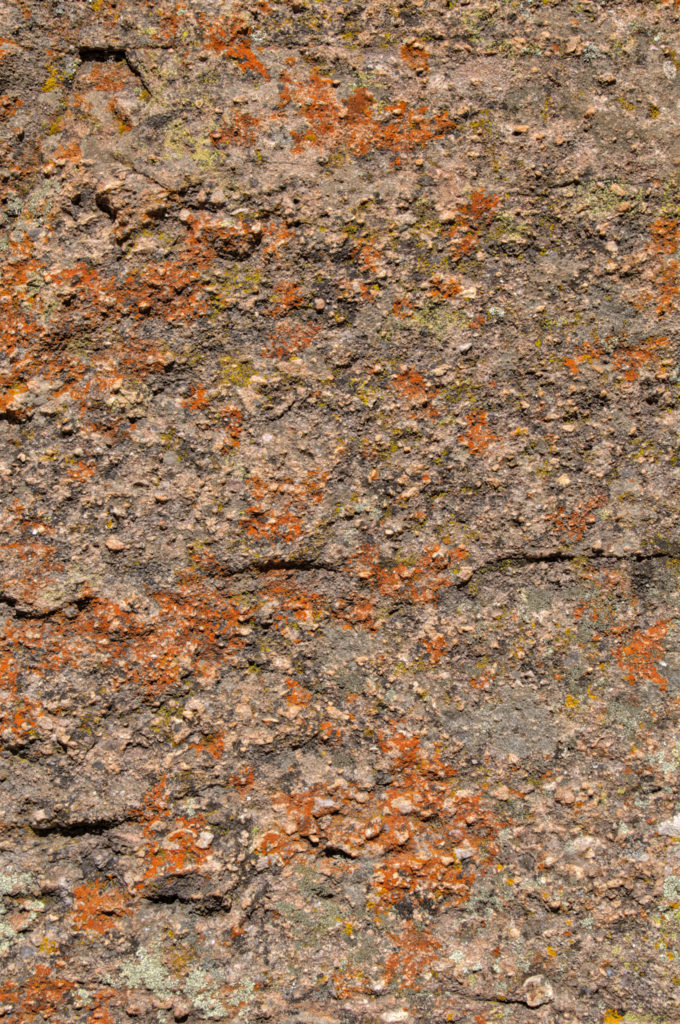Located 40 miles north of Silver City, New Mexico, Gila Cliff Dwellings National Monument is remote. However, it is well worth the winding mountain road to get there. Once there, you can take a 1-mile loop trail that procedes up a side canyon, along a creek, and up to and through the interconnected cliff dwellings. In fact, Gila Cliff Dwellings is one of the few ancient cliff-house sites where visitors can walk in and among the rooms and alcoves on their own.
Photographs taken at the Gila Cliff Dwellings
Here are some photos we took on our short day-trip to the monument.
Basic info about Gila Cliff Dwellings
There are seven alcoves, or caves, that are about 200 feet from the valley floor. And, seasonal habitation by nomadic hunter-gathers started about 500 AD. The blackened roofs of the caves attest to this ancient habitation. However, the cliff dwellings we see today are much later. They were built and occupied during one generation, starting around 1260 and ending soon after 1290 AD.
These approximate dates were determined through tree-ring dating of the vigas and other timbers, which are ORIGIAL. The timbers were cored and dated to between 1260 and 1280. Here is a photo of one of the cored timbers.
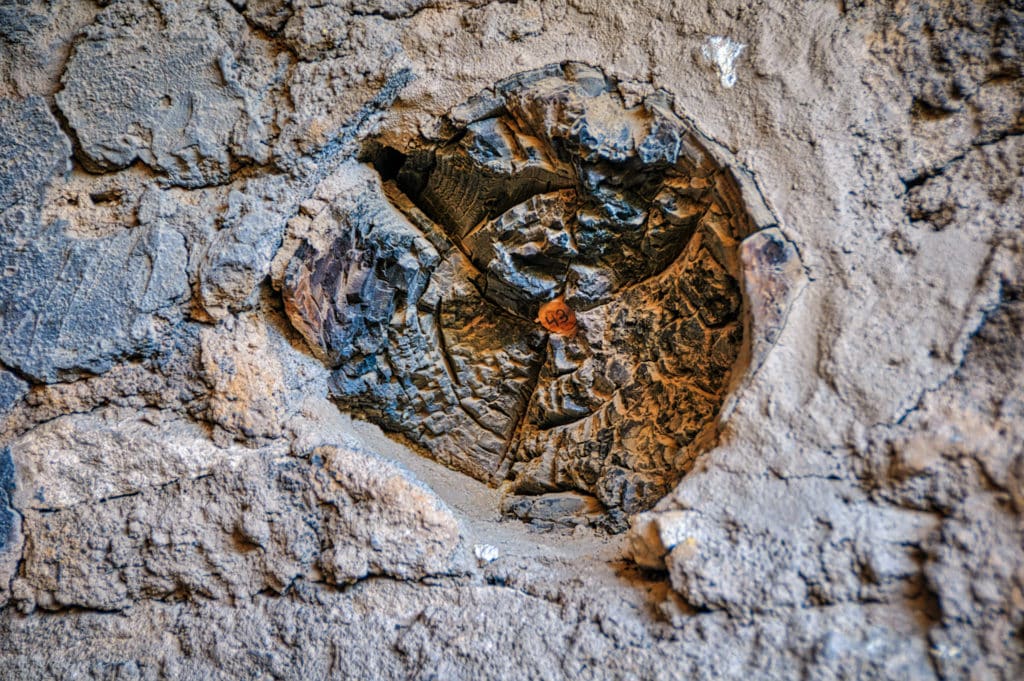
Combined, there are 40 or so rooms within the cliff dwellings. And, according to archaeologists, this number of rooms indicates that about 8 to 10 families (or 40 people) made their home there.
Photographing the cliff dwellings
Because access to the trail leading to the Gila Cliff Dwellings is only open between 9AM and 4:30PM, dawn and dusk shots are NOT going to be part of your shooting list–unless, of course, you have made some kind of arrangement with the monument. So here are a few tips to get the most from your visit to the site:
Shoot HDR
If it is a sunny day, you will be faced with deep, dark rooms looking out to a brilliantly lit canyon. So, a nice bracketed series of exposures are just what you need. Depending on my situation, I shot 5, 7, and 9 exposure series. In some cases, I used one of the lower exposure shots in order to create a more dramatic scene.
Clean your lenses and sensor
Before heading up to the ruins, be sure that your lenses and sensor are clean. Because of the high contrast between the dark interiors and the bright external light, every little dust particle will show up in the final photograph. Eliminating these blemishes takes a good bit of post-processing!
Take plenty of exterior shots
The stonework of the cliff dwellings is beautiful! In most cases, thin slabs of local rock are stacked and mortered together with with an adobe-like morter. And, it is this fine texture and similar color that almost seamlessly integrates the facades into the surrounding rock. In some places the walls seem to “grow” up from the alcove floors. There are many opportunities along the trail to frame up shots that highlight this nasterful stonework. Oh, and be sure to get a shot of the Chacoan-style t-shaped doorway! There is a great deal of speculation about the doorway. So, check out the references below.
Don’t miss the Trail to the Past
Be sure to walk the Trail to the Past. It is two-thirds of the way between the Visitor’s Center and the parking for the Cliff Dwellings Trailhead. The main panel is huge and contains many prehistoric pictographs. Ground up hematite, which is a form of iron oxide. is the source of the red paint. And, speculation is that the first inhabitants of the area painted these images starting about 1500 years ago. So, it is quite amazing that many of the pictographs are still vibrant and recognizeable.
There are also petroglyphs pecked in and around the pictographs. One looks like a Mimbres-style duck—to me, at least. Here is an overview of the main panel.
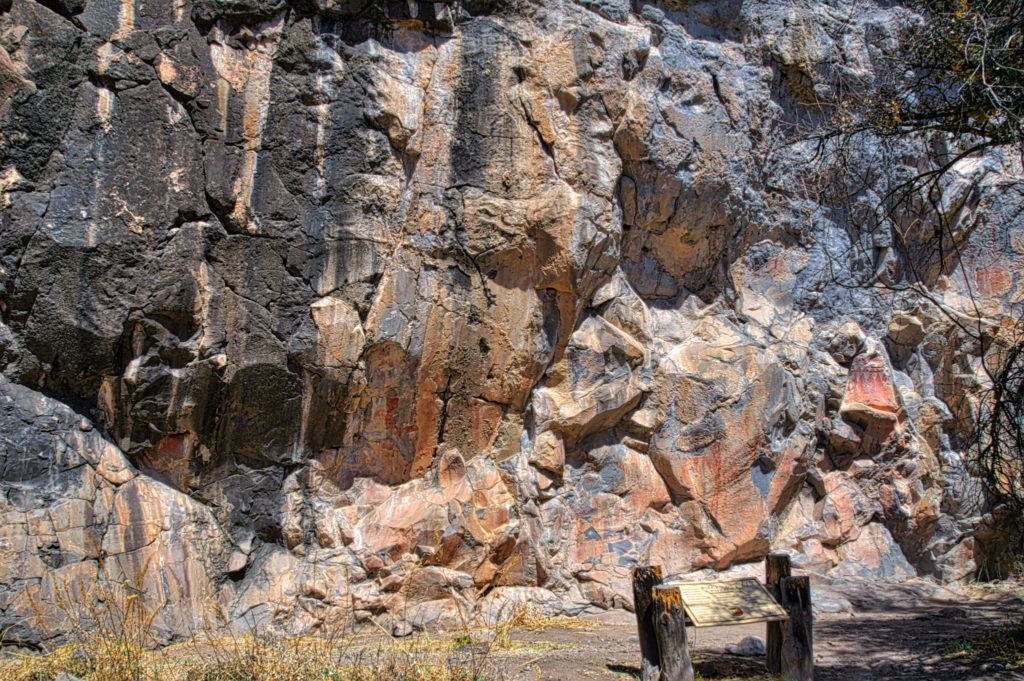
References about Gila Cliff Dwellings
I have stayed away from commenting on the people who built the dwellings. Conventional wisdom attributes them to the Tularosa branch of the Mogollon people. Maybe. Remember me mentioning the t-shaped doorway? In any case, this post is about photographing the monument, not debating the history. But, here are additional links for more information about the archaeology and geology of the monument:
The Gila Cliff Dwellings National Monument
August 30, 2015
A MYSTERY WRAPPED IN STONE
Many Questions, A Few Clues, Emerging Answers
Part 1 of 2
The Gila Cliff Dwellings National Monument
September 25, 2015
A MYSTERY WRAPPED IN STONE
Many Questions, A Few Clues, Emerging Answers
Part 2 of 2
Geology of Gila Cliff Dwellings National Monument by the New Mexico Bureau of Geology & Mineral Resources
Here is a map of the monument that shows how to access the main attractions.
The National Park Service website for Gila Cliff Dwelling provides very rudimentary information about the National Monument. Use it to verify hours, closures, and special programs.
Purchasing our photographs
All of our scenic photographs are available as fine art prints. So, use the contact form to the right to get more information. Or, go to our Fine Art Print page to learn about various pricing options.

